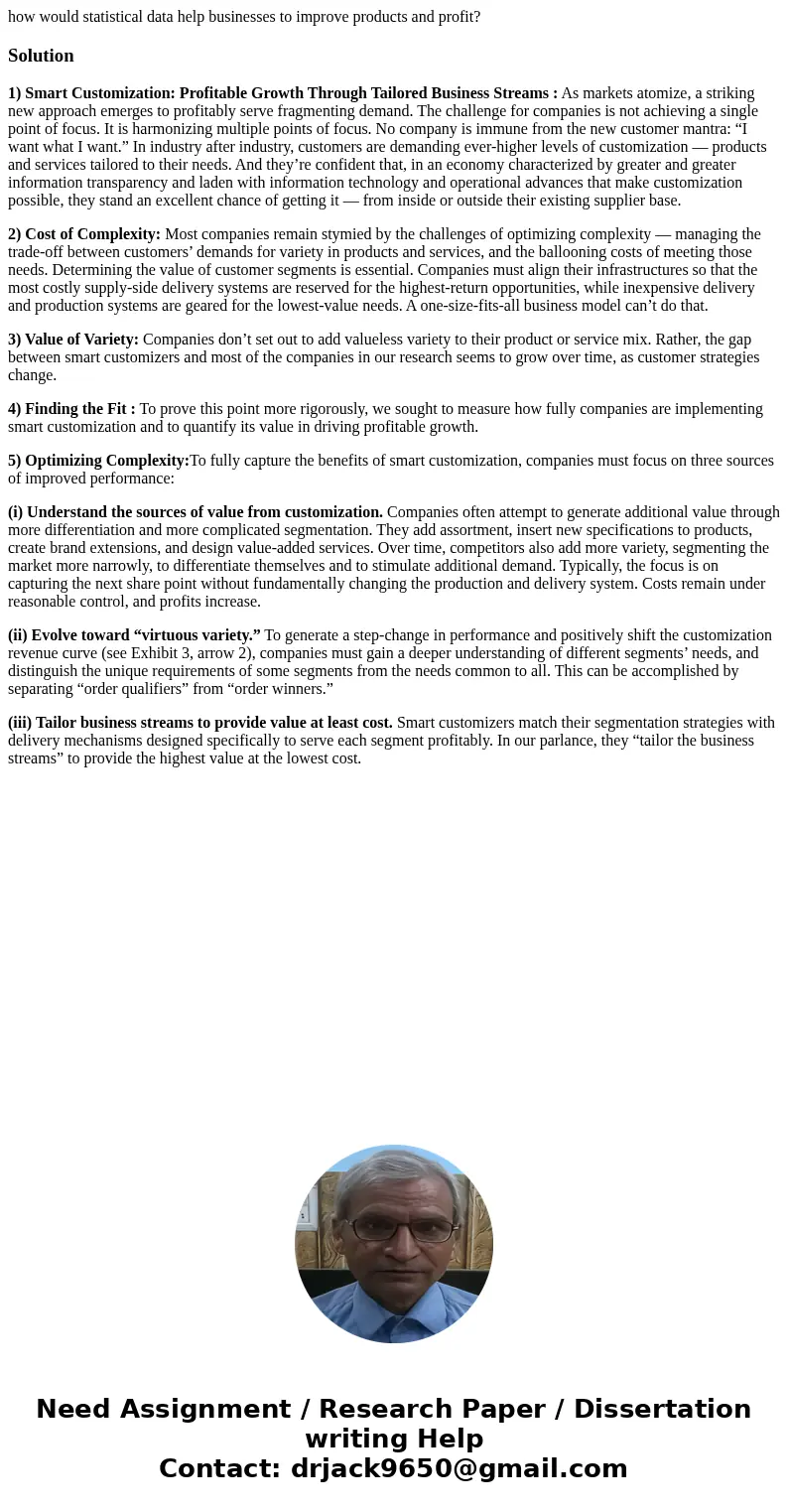how would statistical data help businesses to improve produc
how would statistical data help businesses to improve products and profit?
Solution
1) Smart Customization: Profitable Growth Through Tailored Business Streams : As markets atomize, a striking new approach emerges to profitably serve fragmenting demand. The challenge for companies is not achieving a single point of focus. It is harmonizing multiple points of focus. No company is immune from the new customer mantra: “I want what I want.” In industry after industry, customers are demanding ever-higher levels of customization — products and services tailored to their needs. And they’re confident that, in an economy characterized by greater and greater information transparency and laden with information technology and operational advances that make customization possible, they stand an excellent chance of getting it — from inside or outside their existing supplier base.
2) Cost of Complexity: Most companies remain stymied by the challenges of optimizing complexity — managing the trade-off between customers’ demands for variety in products and services, and the ballooning costs of meeting those needs. Determining the value of customer segments is essential. Companies must align their infrastructures so that the most costly supply-side delivery systems are reserved for the highest-return opportunities, while inexpensive delivery and production systems are geared for the lowest-value needs. A one-size-fits-all business model can’t do that.
3) Value of Variety: Companies don’t set out to add valueless variety to their product or service mix. Rather, the gap between smart customizers and most of the companies in our research seems to grow over time, as customer strategies change.
4) Finding the Fit : To prove this point more rigorously, we sought to measure how fully companies are implementing smart customization and to quantify its value in driving profitable growth.
5) Optimizing Complexity:To fully capture the benefits of smart customization, companies must focus on three sources of improved performance:
(i) Understand the sources of value from customization. Companies often attempt to generate additional value through more differentiation and more complicated segmentation. They add assortment, insert new specifications to products, create brand extensions, and design value-added services. Over time, competitors also add more variety, segmenting the market more narrowly, to differentiate themselves and to stimulate additional demand. Typically, the focus is on capturing the next share point without fundamentally changing the production and delivery system. Costs remain under reasonable control, and profits increase.
(ii) Evolve toward “virtuous variety.” To generate a step-change in performance and positively shift the customization revenue curve (see Exhibit 3, arrow 2), companies must gain a deeper understanding of different segments’ needs, and distinguish the unique requirements of some segments from the needs common to all. This can be accomplished by separating “order qualifiers” from “order winners.”
(iii) Tailor business streams to provide value at least cost. Smart customizers match their segmentation strategies with delivery mechanisms designed specifically to serve each segment profitably. In our parlance, they “tailor the business streams” to provide the highest value at the lowest cost.

 Homework Sourse
Homework Sourse